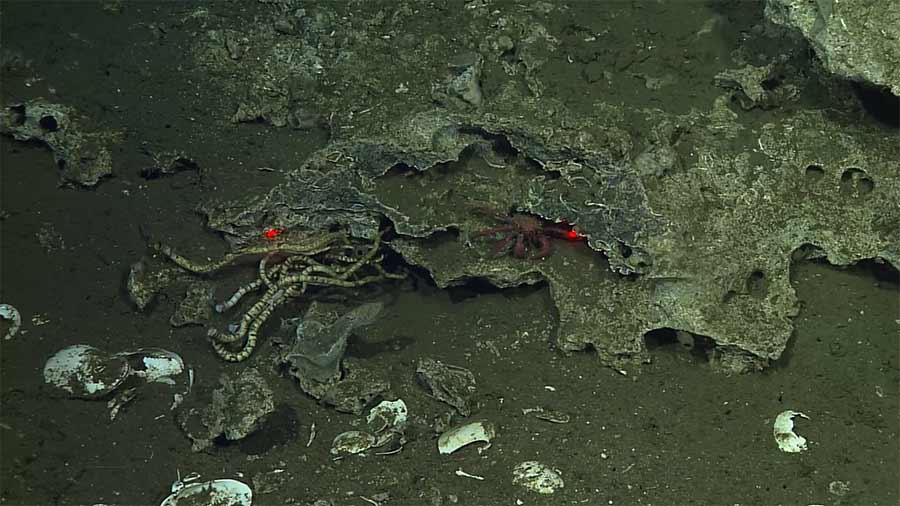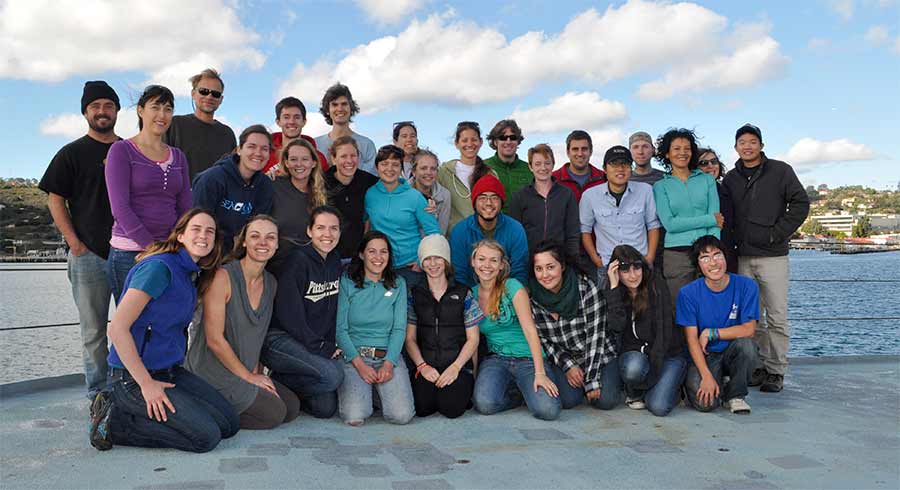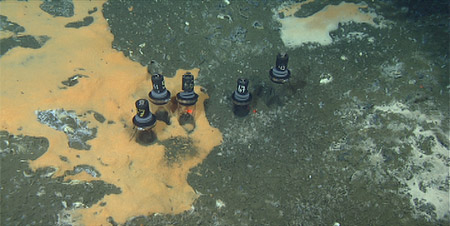
Researchers Release Details of Recently Discovered ‘Del Mar Seep’
Video illustrates deep-sea methane seep site found 30 miles west of San Diego coast
By:
- Mario Aguilera
Media Contact:
- Mario Aguilera - maguilera@ucsd.edu
- Robert Monroe - scrippsnews@ucsd.edu
Published Date
By:
- Mario Aguilera
Share This:
Article Content
Researchers at Scripps Institution of Oceanography at UC San Diego have released details of a deep-sea site roughly 48 kilometers (30 miles) west of Del Mar (just north of San Diego, Calif.) where methane is seeping out of the seafloor, the first such finding in the region.
Scripps graduate students on a 2012 UC Ship Funds Program expedition aboard Scripps’s research vessel Melville off San Diego County discovered the “Del Mar Seep” during the San Diego Coastal Expedition. Such methane seeps are fascinating environments because of their extraordinary chemical features, at times with bubbling methane streams, and often inhabited by odd and uniquely adapted creatures.

A clump of tubeworms and a juvenile lithodid crab were exposed in the Del Mar Seep when outer rocks were removed.
In 2013 the researchers returned to the site, at 1,020 meters (3,346 feet) depth, with a remotely operated vehicle (ROV) to collect samples that would allow them to compare the site to previously studied methane seeps. The team has issued results of a detailed characterization of the Del Mar Seep ecosystem in the August 2015 issue of the journal Marine Ecology.
“The diversity of habitat types we saw within this one seep was really striking,” said Ben Grupe, a Scripps alumnus who led the study. “Some areas featured dense but patchy clam beds, others had sediments covered with bacterial mats, while others had snails and glass sponges living on large carbonate rocks.”
The scientists also documented larger fish such as Longspine Thornyheads and Pacific Dover sole as well as lithodid crabs, leading to questions about whether this and other West Coast seeps might collectively influence fisheries and support nearby food webs on the continental margin.

The San Diego Coastal Expedition, two student-led research cruises aboard R/V Melville, explored the oceans off San Diego from June 30-July 10 and December 8-15, 2012. The expedition was supported by the UC Ship Funds program.
A recent visit by Nautilus Live and the ROV Hercules observed sablefish (black cod), skates, and hagfish in and around the Del Mar Seep. This research cruise, which documented the impressive diversity of deep-sea habitats in Southern California, allowed Scripps researchers to recover experiments that were deployed two years prior. Grupe and Lisa Levin, a Scripps professor and study coauthor, hope to use these ongoing colonization experiments to learn more about how methane seep ecosystems might respond to natural or human-caused disturbances.
Chemical analyses of Del Mar Seep inhabitants, including various snails, worms, and sponges, revealed that some of the organisms are getting their nutrition from microbes that directly consume methane. Grupe says such methane consumption can be thought of as a filter that reduces the amount of methane, a potent greenhouse gas, released from the seafloor to the ocean (chemical tests show that the methane is likely produced by bacteria that consume organic material buried in sediments under the seafloor).
“If the community at this seep is taking up methane and converting it to other forms of carbon, that may be preventing additional methane gas from bubbling up into the wider ocean ecosystem,” said Grupe.

Push cores are used by deep-sea submersibles to collect individual sediment cores. These were intentionally placed to sample both an orange mat of sulfide-oxidizing bacteria, and also a patch of ampharetid polychaete tubes (gray patch).
As the first methane seep discovered in the region, the scientists say the Del Mar Seep will begin to provide clues about how methane seeps may be connected across vast distances with each other and with other ocean ecosystems.
“Finding a methane seep in our own backyard is a great opportunity for Scripps,” said Levin. “There is the potential for more frequent visits and long-term observations, and for greater engagement of the public and students. My hope is that more people will learn about chemosynthesis-based ecosystems like this methane seep. As the ocean warms it is likely that more methane will be released from the seafloor, and seep ecosystems will expand.”
Share This:
You May Also Like
Stay in the Know
Keep up with all the latest from UC San Diego. Subscribe to the newsletter today.


